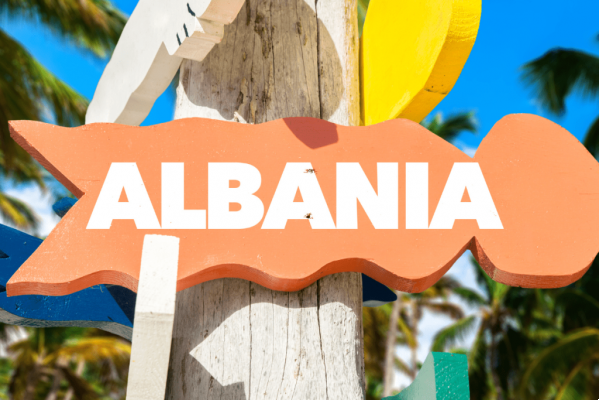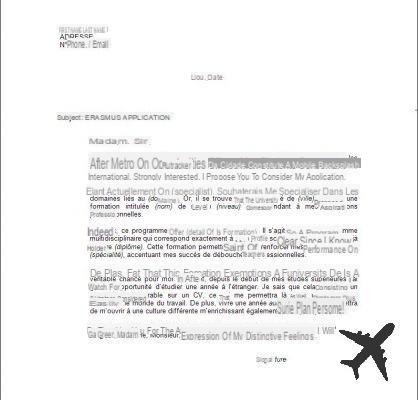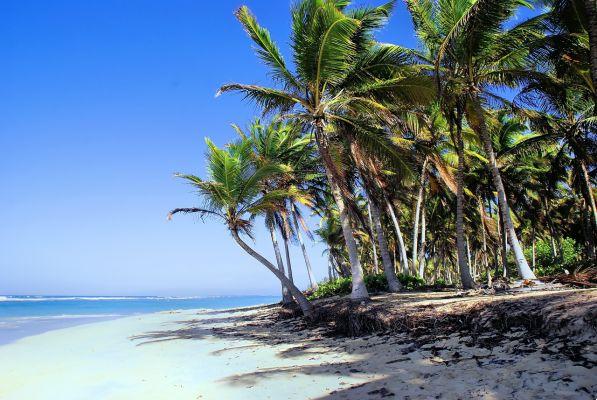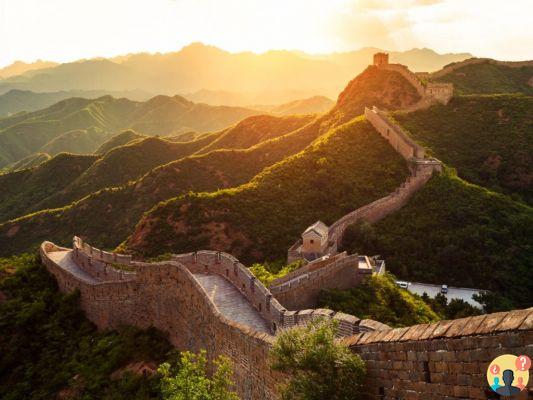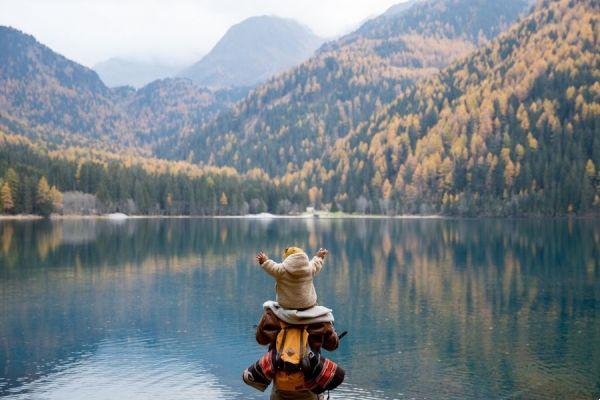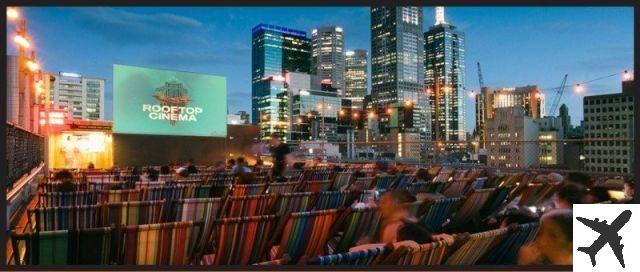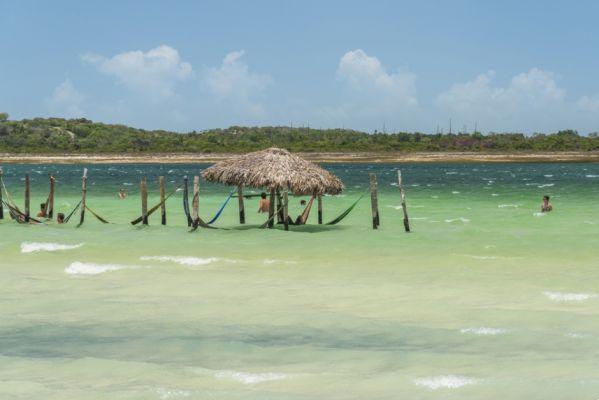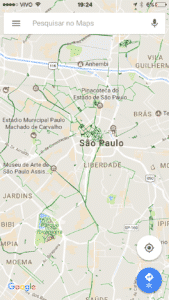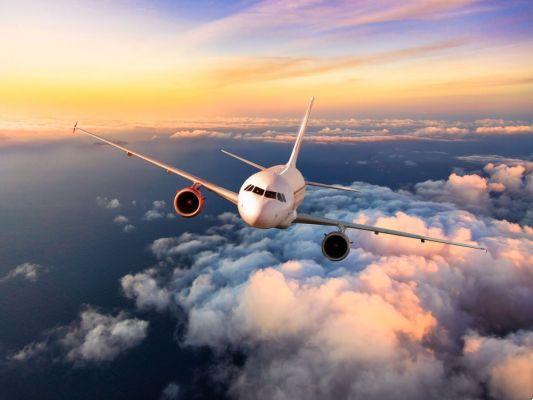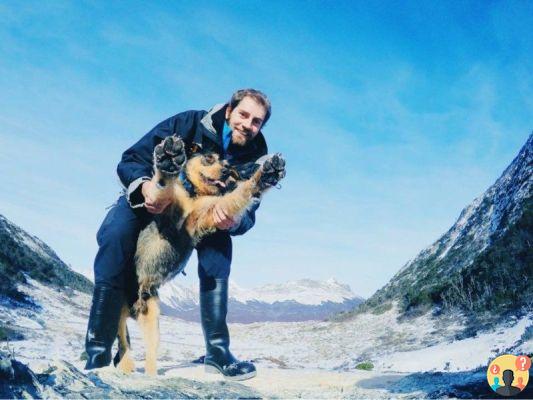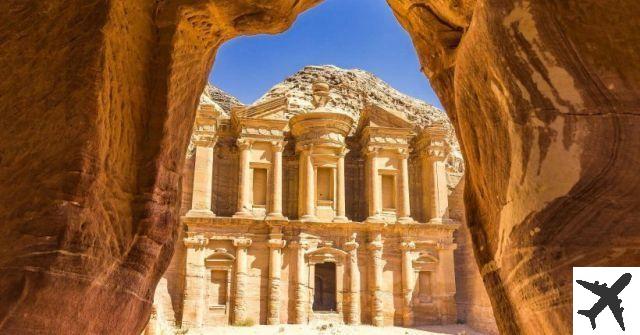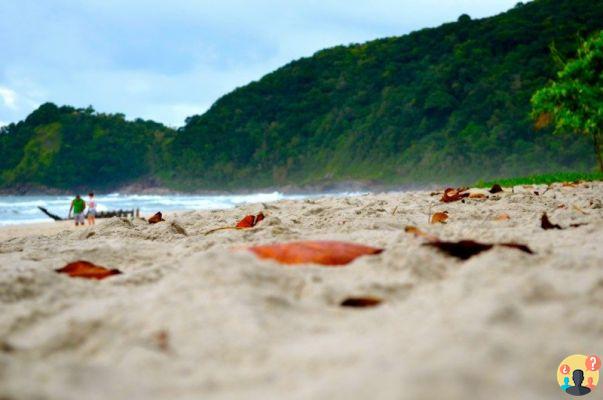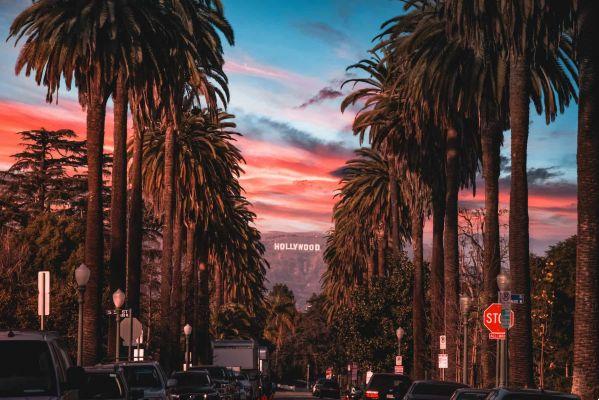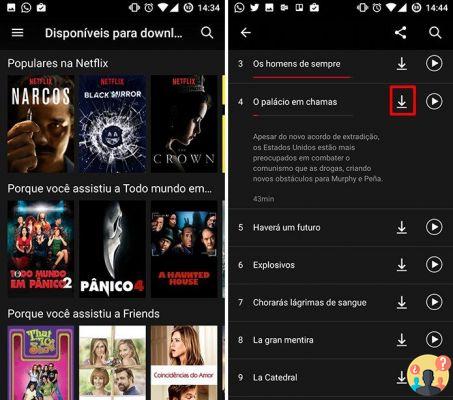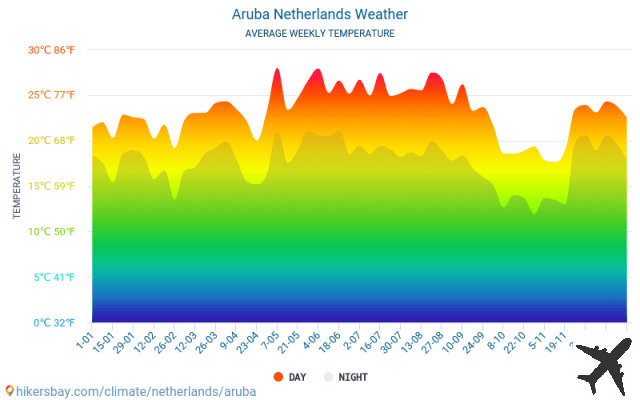In recent times, more precisely for the past 16 years, much has been said about space tourism. The possibility of traveling beyond this world, observing our planet from afar, floating in microgravity and feeling almost like a real astronaut is already a reality.
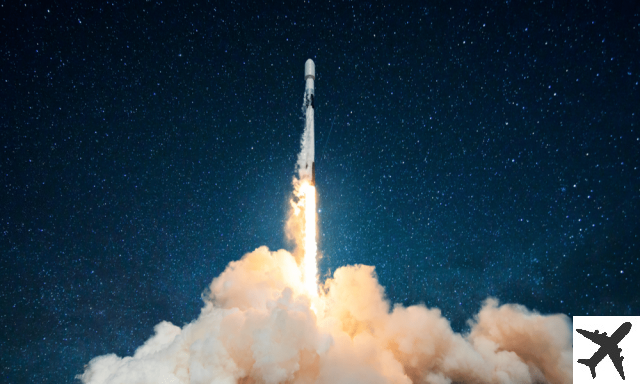
Although the financial issue is an obstacle for most mere mortals, the fact that ordinary people, without professional training or scientific purpose, can contemplate the blue of the Earth (and find that, yes, it is round - or almost that), is extremely relevant to our evolution in general. It's like Neil Armstrong said when he stepped on the moon: one small step for man, one big leap for humanity!
If you want to know what space tourism is, know the history of some people who have already taken a space tourism trip, what is the price of an adventure like this, what are the space tourism companies and other details, you are in the right place .
I invite you to board with me and find out all about it in this real space tourism guide. A complete and very informative trip – and without leaving the place (at least, for now)!
What is space tourism?
Until recently, space exploration was restricted to government organizations such as the US space agency (formal name is the National Aeronautics and Space Administration), better known as NASA, to Roscosmos (of Russia ) and the European Space Agency (ESA), for example.
Private companies, such as Boeing, Northrop-Grumann and Lockeed Martin, also operated in this field in support of technical and scientific missions by these agencies, but without their own launch capacity. However, space tourism came to figure as a desire for billionaires, which created a business opportunity and led to the emergence of companies such as Virgin Galactic and Blue Origin.
This led to a fierce dispute, especially between the two mentioned, in addition to SpaceX (which was not born with this purpose, but joined the “fight”), to be the great standouts in the field of space travel and tourism. But, after all, what exactly is space tourism?
Basically, it's the possibility for ordinary citizens from anywhere on planet Earth to board a capsule attached to a rocket and be fired beyond our atmosphere (usually, the launch is like that).
Whether you want to spend just a few minutes or days, get to know the International Space Station (ISS) or possibly even step on lunar ground, the fact is that the era of space tourism seems to have arrived for good. In the year 2021, the three main private companies in the aerospace market made trips with civilians among their crew, and no fewer than 18 people went "walking" in space.
Before understanding how space tourism works, it is important to know where exactly such space begins. After all, a trip to any destination is only characterized as a tour of that location if you have, in fact, arrived there.
You can't get to know Christ the Redeemer up close if you don't go to Rio de Janeiro. In the same way, you will only bathe in Salvador's sea if you set foot in the Bahian capital. You can only take the traditional tourist photo with your little finger on the tip of the Eiffel Tower, if you travel to Paris. In other words, arriving only “in the vicinity” is not worth it.
By NASA, Federal Aviation Administration (FAA) and US military standards, the beginning of outer space begins at 80 km above the surface. The 80km line also has other supporters, including Jonathan McDowell, an astrophysicist and satellite tracker based at the Harvard-Smithsonian Center for Astrophysics, who defended its adoption in a 2018 paper.
However, there is a different border established in an international convention, which is the framework accepted by the International Aeronautical Federation (FAI). This boundary, called the Kármán Line, is at an altitude of 100 km and was defined by the Hungarian-American physicist Theodore von Kármán, using as a parameter the region where the forces of orbital dynamics exceed those of aerodynamics.
In any case, the definition of outer space is not just a philosophical debate. This has real-world financial implications, as some space tourism companies may sell seats on flights that technically don't reach space, depending on where that threshold actually lies.
Thus, some privileged who can afford such a seat can "buy a pig in a poke" and come to tell their children, grandchildren and great-grandchildren in the future about a trip they technically didn't take (even though they pay a small fortune for it) .
That being clear, let's now find out how space tourism works, when it started, and if this is a dream for you, how much would you need to shell out to make it happen.
Space tourism: how does it work?
To make a space trip for tourism, the procedures depend on each company. Blue Origin, for example, has a waiting list. For the company's first manned spaceflight, which took place on July 20 of this year and had its owner and CEO Jeff Bezos on board, only one seat was sold, through an auction.
Interestingly, the winner, who took the spot for US$28 million, did not board due to a conflict of schedules. So, student Oliver Daemen secured his ticket, acquired by his father, Joes Daemen, a top Dutch executive.
The other seats were occupied by Bezos and two guests: his brother Mark and the octogenarian Wally Funk, an aviator from the 1960s, who participated in the group “Mercury 13”, and ended up becoming, for a short time, the oldest person to fly to space.
Bezos revealed that the auction through which Daemen obtained his ticket raised more than US$100 million (approximately R$550 million), and that more than 7,6 interested parties, from 159 different countries, had signed up to participate. The amount raised was fully donated to the NGO Club for the Future, maintained by Blue Origin, which aims to inspire future generations to pursue careers in STEM (Science, Technology, Engineering and Mathematics) and “help invent the future of life in space".

On the other hand, Virgin Galactic, which was the first private company in history to take tourists on a suborbital flight – and there is a debate about whether or not they can be considered space tourists, since they did not cross the Kármán Line – offers three options for tour.
According to the company, the consumer can choose between buying a single seat, purchasing a package with several seats or chartering a complete flight for up to six people.
Another company that also works with space tourism flights is SpaceX. Elon Musk's company carried out the first fully civil flight in history this year: the Inspiration4 mission, financed and commanded by billionaire Jared Isaacman.
In addition to Isaacman, the other three crew members were also space tourists. They received SpaceX astronaut wings, a symbolic brooch, but are not officially recognized as astronauts. This designation is only granted by NASA, and there are requirements for it, which you can check here.
Is it enough to have money left over, buy your ticket and enjoy the adventure? No. There are prerequisites for this, which also vary from company to company. To fly Blue Origin, for example, the minimum age is 18 years. The applicant must be more than 1,50 m and less than 1,92 m. There are also minimum and maximum weight limits: from 50 kg to 101 kg.
In addition to these requirements, there are a number of others, the following four being highlighted:
- Ability to scale the New Shepard spacecraft launch tower (the equivalent of seven flights of stairs) in 90 seconds and to walk on slightly uneven surfaces;
- Fasten and release the seat belt within a maximum time of 15 seconds;
- Being able to withstand a force of up to three times the acceleration of gravity (3 Gs), for about two minutes (this being one of the sensations on takeoff – during the flight, this force can reach almost 6 times during a few seconds);
- Listening to and understanding English instructions from crew members or radio communicators in an environment where sound volume can reach 100 dB.
As for training, they last around 14 hours in a single day. In them, potential crew members carry out mission tests, receive safety instructions, carry out similar activities, in addition to operating procedures in general. In these flight preparations, they also receive guidance on microgravity.
Virgin Galactic is less demanding about prerequisites. All you have to do is be in good physical shape and go to the training stage, which takes place over three days at Spaceport America (Espaçoporto América), located in New Mexico, USA.
These trainings involve microgravity tests, safety recommendations (especially for moments of high acceleration) and instructions on personal protective equipment (PPE) to be used in flight. In addition, the future crew members have a specialized medical team that accompanies them until take-off, ensuring their physical and mental integrity throughout the process.
SpaceX has not yet formalized its guidelines for launching tourists into space, it has only guaranteed that it will offer tours at better prices than its competitors (we'll talk about this later). However, Inspiration4 passengers are known to have undergone the same training NASA astronauts receive before flying a Crew Dragon, including physical tests (such as the dreaded centrifuge), classes in orbital mechanics, and basic training in function and operation. of the capsule.
When did space travel begin?
Before we reach this stage, a long way was traveled so that today it could be as “simple” as taking a walk among the stars.
After the launch of the monkey Albert II, in 1949, and the dog Laika, in 1957, both with the sad fate of dying alone and charred on their return to Earth, the first manned flight with the successful return of their occupants took place in 1960. Puppies Belka and Strelka returned safe and sound, raising hopes for a spaceflight with humans.
That came to pass a year later, when Soviet astronaut Yuri Gagarin became the first person to go into space. He piloted the spacecraft Vostok I, of the space program of the then Soviet Union.

What about space tourism?
If the gap between the flights of the first surviving animals and the first person to go to space was just a year, the gap between the first human flight and the debut trip of space tourism was much greater: 40 years separate Yuri Gagarin from the engineer American billionaire Dennis Anthony Tito. He went down in history as the first person to pay for this privilege.
15 people who have already been to the space on a tour
Meet 15 people who have already traveled as space tourists, starting, of course, with those who opened the category.
Dennis Titus
American engineer and entrepreneur Dennis Anthony Tito was a pioneer in space tourism. He disbursed no less than US$20 million (the equivalent of R$113,19 million at the current price) to board the Russian spacecraft Soyuz TM-32 towards the International Space Station (ISS) on April 28, 2001.
It was eight days in orbit aboard the ISS, as a member of the ISS EP-1 mission, alongside Russian cosmonaut Yuri Baturin and Canadian astronaut Chris Hadfield.
Mark Shuttleworth
After Tito, it was the turn of Mark Shuttleworth, founder of Canonical, the company responsible for developing one of the most popular Linux distributions today, Ubuntu. In 2002, he became the first South African to go into space, launched on the Russian Soyuz TM-34 spacecraft.
Shuttleworth also paid US$20 million for the tour and spent 10 days on the ISS, where he performed some scientific experiments with a live mouse and sheep cells. He traveled together with Russian cosmonaut Yuri Gidzenko and Italian Roberto Vittori.
Gregory Olsen
Founder of an optical-electronic material development company and infrared camera supplier to NASA, American millionaire Gregory Hammond “Greg” Olsen flew aboard the Soyuz TMA-7 spacecraft, accompanied by Russian cosmonaut Valeri Tokarev and the astronaut American William McArthur, in 2005. Olsen paid the same amount as Tito and Shuttleworth.
Anousheh Ansari
In 2006, it was the turn of the first female space tourist, the Iranian Anousheh Ansari, to pay the same amount to go into space aboard the Soyuz TMA-9 spacecraft, along with Russian cosmonaut Mikhail Tyurin and the American-naturalized Spaniard Michael López-Alegría, for a nine-day stay on the ISS.
It had sponsored, two years earlier, the Ansari X Prize, a competition that offered a $10 million prize to a non-governmental company to make the first privately funded human spaceflight. The winner was Scaled Composities, responsible for the spaceship SpaceShipOne, of which SpaceShipTwo, from Virgin Galactic, is a direct descendant.
Charles simonyi
Charles Simonyi is one of Microsoft's oldest programmers, and is responsible for creating the company's applications division, which gave rise to Microsoft Office. The American, of Hungarian origin, disbursed US$25 million to be part of Space Adventures' first tourist flight, in 2007. Simonyi even repeated the feat in 2009.
The first time, he was part of the Soyuz TMA-10 mission, alongside Russian cosmonauts Oleg Kotov and Fyodor Yurchikhin. He spent 13 days on the ISS as part of Expedition 15.
The second time, when he was part of Expedition 19, Simonyi paid $10 million more than the first time, flying alongside Russian cosmonaut Gennady Padalka and American astronaut Michael Barratt and spending 12 days in the orbital laboratory.
Richard Garriott
Richard Garriott is founder of game developer Origin Systems, responsible for the "Ultima" RPG series, and is best known by the name of his in-game character, "Lord British". He was inspired by his father, American astronaut Owen Garriott, who, in 1973, spent 60 days in orbit aboard the first US space station, Skylab.
Garriott (the British Lord) paid about $30 million to go into space in 2008. His stay on the ISS was 11 days and he flew aboard the Soyuz TMA-13 spacecraft, with Russian cosmonaut Yuri Lonchakov and fellow travellers. the American Michael Fincke.
While on the ISS, Garriott committed a “mischief” that he only confessed to many years later. She hid, somewhere behind the panels that line the interior of the station, a portion of the ashes of the body of actor James Doohan, “Scotty” from the Star Trek series.
Guy Laliberté
In 2009, it was the turn of the creator, CEO and executive director of Cirque du Soleil, Canadian Guy Laliberté, to pay US$35 million for space tourism. He was part of the crew of the Soyuz TMA-16 spacecraft, along with Russian cosmonaut Maxim Victorovich Surayev and American astronaut Jeffrey Williams.
Among the activities carried out during his 10-day stay in orbit, he directed, from space, the show “From Earth to the Stars by Water”.
Jared isaacman
Founder and CEO of the American payment processing company Shift4Payments, Jared Isaacman was the creator of Inspiration4, which, in addition to being the first 100% civil mission in history, had a philanthropic character by supporting the St. Jude Children's Research Hospital, center of pediatric treatment and research aimed at childhood cancer.
Hayley Arceneaux
As seen, most space tourists invest quite a lot of money to make their dream come true. But some of them are lucky enough to be invited, as was the case with Wally Funk and actor William Shatner, who flew on Blue Origin, for example.
Hayley Arceneaux, an assistant physician at St. Jude Hospital, an entity benefiting from the Inspiration4 philanthropic mission, was part of the crew at the invitation of Jared Isaacman, the project's creator. She, who at the age of 10 was treated for bone cancer at the same hospital, went down in history as the first person with a prosthesis to go into space.
Sian Proctor
Another milestone of the Inspiration4 flight was having the first black woman not only as a space tourist but, mainly, as a pilot: geoscientist, science communicator and artist Sian Proctor, who took with her an autograph by Neil Armstrong, the first man to ride. step on the moon, obtained by his father.
Chris Sembroski
A US Air Force veteran working in Lockheed Martin's aerospace division, Chris Sembroski spent three days in orbit aboard the SpaceX Crew Dragon Resilience spacecraft along with Isaacman, Arceneaux and Proctor on the Inspiration4 mission.
A curious fact: Sembroski, who had no musical aptitude until then, took guitar lessons with musician, composer and music producer AJ Smith to entertain the crew playing ukulele during the trip – promoting a true “luau in space”.
Richard Branson
Richard Charles Nicholas Branson is a British businessman, founder of the Virgin Group, of which Virgin Galactic is a part. At 71, Branson was a crew member of his own company's first tourist spaceflight – and the first in the history of private companies.
Known for being adventurous and enjoying strong emotions, Branson survived a shipwreck in Mexico when he was young, has already plummeted into a canyon, fallen out of a hot air balloon, been aboard another that caught fire in mid-flight, made his groom entrance at his wedding hanging from a helicopter… phew! Think it's over? The billionaire has defied death at least 15 times.
Jeff and Mark Bezos
Blue Origin joined Guinness with its first tourist spaceflight for a few reasons, among them: to take the oldest person into space (Wally Funk, aged 82, who soon lost the title to William Shatner, as mentioned) and the person younger (Oliver Daemen, at 18) and also for being the first to transport two brothers at the same time: Jeff Bezos and his younger brother, Mark.
“Since I was five years old, I dream of traveling into space. On July 20th, I will take this trip with my brother. The biggest adventure, with my best friend”, wrote Jeff on Instagram a few days before boarding.
William Shatner
“Space, the final frontier”. With that phrase, Canadian actor William Shatner has enchanted generations in the role of “Captain James T. Kirk,” commander of the iconic USS Enterprise in the Star Trek franchise. Back then, he couldn't even imagine that, 55 years later, he would actually fly into space.
Invited by Jeff Bezos, Shatner was part of the crew of Blue Origin's NS-18 mission, on the company's second tour flight, which took place on October 13th. Joining him were Blue Origin executive Audrey Powers, as well as Chris Boshuizen, co-founder and CTO of PlanetLabs – a company that maintains a fleet of earth observation satellites – and Glen de Vries, an executive at Medidata – the company responsible for the clinical testing platform most used in the world.
Top companies that have stood out in space tourism
Of the private companies that offer the space tourism service, the three mentioned above are worth mentioning: SpaceX, Blue Origin and Virgin Galactic.
There are also some that promise balloon rides to the stratosphere, which are far from the 100 km that mark the boundary between Earth and space. But, of course, it is still an exciting ride, which offers incredible views and promises to be an unforgettable trip. In this branch, we have Space Perspective and World View Enterprises as options.
Spacex, by Elon Musk
Space Exploration Technologies Corporation, the name of SpaceX, is an American manufacturer of aerospace, space transportation and communications systems, headquartered in Hawthorne, California.

Holder of billionaire contracts with NASA, including the agreement to build a new lunar landing module, as part of the so-called Artemis Project, Elon Musk's company also operates in the telecommunications sector through the Starlink project, a low-cost, high-performance satellite platform used to provide broadband internet access anywhere on the planet.
Responsible for conducting the Inspiration4 mission, SpaceX already has many customers interested in doing space tourism aboard its Crew Dragon spacecraft. However, the company does not actively position itself as a “tour operator”, this being just one of its activities.
Unlike Jeff Bezos of Blue Origin and Richard Branson of Virgin Galactic, Musk was not yet a space tourist himself.
Blue Origin, by Jeff Bezos
As already mentioned, Blue Origin, a suborbital space flight services and astronautics company based in the city of Kent, Washington, was founded by Amazon creator Jeff Bezos. The company has already carried out two space tourism flights, both in 2021. In the first of them, Jeff Bezos was on board.

One of SpaceX's main rivals, Blue Origin, filed a lawsuit against NASA, along with David King's company Dynetics, due to the contract signed with Elon Musk for the construction of the landing module on the Moon. Bezos and King allege that the selection did not follow normal bidding procedures. They lost the case.
Virgin Galactic, by Richard Branson
Founded in 2004, Virgin Galactic is a publicly traded space flight company owned by the Virgin Group, owned by British billionaire Richard Branson, the first to fly into space this year (though the title is debatable given Branson's flight. having reached only 80 km of altitude).

A technical problem that occurred during the flight made by Branson caused the US Federal Aviation Administration (FAA) to open an investigation against the company and prevent its action until the situation was evaluated. After completing the investigation, the agency released the continuity of services. In any case, new Virgin flights are only planned for the second half of 2022.
Does NASA Offer Space Tourism?
As one of the ISS administrators, NASA is responsible for allowing private companies to take tourists there, but it does not carry out the trips itself. It is the US space agency that sets launch dates and how long tourists can stay in the orbital laboratory, as well as the roles that they will eventually play there.
According to the agency, the money paid by travelers has a part reversed to finance US government space programs, such as the Artemis Project, for example, which will take the human being back to the Moon.
Can anyone do space tourism? At what step is the possibility of these trips?
Going to space is not the same as going to a neighboring city, or another state, or even another country or continent on our planet. In addition to being an expensive trip, whether to circle the Earth, as the crew of the Inspiration4 mission did, or to get to know the ISS, there are also prerequisites to be met.
As already mentioned, each company has its own policies, but they all have rules and offer training that can be used as a screening, so that even if you have all the money in the world, you cannot travel if you don't fit.
Protecting space tourists comes first, and nothing that could pose a threat to security should go unnoticed, whether it's a health problem or even weight and height limits.
Vehicles used in space tourism
The first tourists to go into space were launched in Soyuz spacecraft, owned by the Russian space agency Roscosmos. This vehicle is capable of carrying a crew of three people on each voyage, and is the oldest spacecraft in use (the first manned flight was in 1967).
To fly Blue Origin, space tourists board a New Shepard rocket, which features acoustic and temperature control in the capsule, information screens and an intercom system. Both the rocket (the target of jokes and controversy on the internet for its phallic shape) and the capsule are reusable: they separate while still on the way up, before reaching the maximum flight altitude, and return separately.

In the case of Virgin Galactic, spaceflight is done aboard SpaceShipTwo. The first model, which took Richard Branson into space in July this year, was the VSS Unity. The ship offers reclining and adjustable seats to be tailored to each passenger; automated lighting, which harmonizes with each phase of the flight; individual screens with real-time data; 16 cameras, which provide high definition images and photos, and 12 windows so that the crew can contemplate the main attraction of the trip: the Earth.

Those traveling on SpaceX will be launched in a Crew Dragon capsule, just like the crew of the Inspiration4 mission. It has the capacity to carry up to seven crew, although so far all missions have been limited to four astronauts. Like Falcon 9 rockets, the capsule is reusable and lands in the ocean with the help of parachutes.
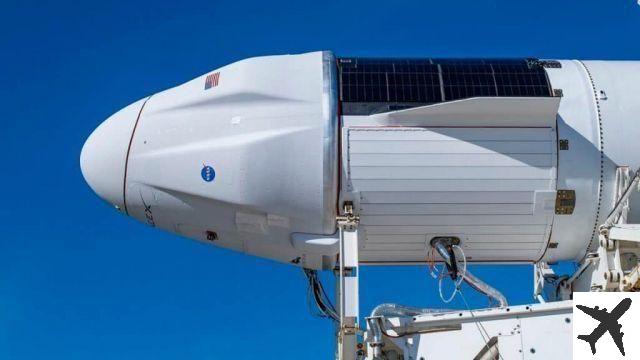
What are the challenges of space tourism?
While traveling to space is becoming more common than could be imagined 20 years ago, this type of tourism still needs to undergo some adaptations, which come from needs usually discovered in mid-flight.
To quote simple things: in the Inspiration4 mission, for example, one of the meals was pizza. The crew, of course, didn't even mind eating it cold. They were eating pizza floating in space, is there any experience that can compare to that? Difficultly. However, this was one of the points noted by Elon Musk, who believes it is necessary to think of a way to install a small oven on board the next flights.
Another important observation is from Musk: the bathroom. Without going into details, he admitted via Twitter that the spacecraft's toilets will need to be upgraded, confirming that there was a problem with this in the Inspiration4 mission.
Another important point to be thought about in relation to the challenges of space tourism is that it implies the need to improve data protection and distance communication technologies.
It is important to remember that space infrastructure involves systems that need to be extremely protected to guarantee their full functioning, such as rockets, robotics, capsules and communication systems between the crew and the base on Earth.
Roscosmos, the Russian space agency, recently sent a film crew to shoot scenes from a movie on the ISS. The work's script itself is indicative of a major challenge to be faced with the increase in space tourism.
In the story, actress Yulia Peresild plays a doctor who needs to go to the orbital laboratory to attend to an astronaut who has too serious a health problem for him to be able to return to Earth. What if this sort of thing happens in real life to everyday people (without the intense preparation that astronauts go through throughout their professional lives)? What would be the measures adopted in case a space tourist needs medical assistance while traveling?
Space tourism: price
For those who can invest US$50 thousand (approximately R$272,8 thousand), the best options are the aforementioned balloon flights, offered by companies such as Space Perspective and World View Enterprises.
If you don't mind not reaching space itself or floating in microgravity, and are content to contemplate the Earth's curvature, this mode is significantly more affordable than flights offered by any other major space tourism company.
Whoever makes a point of flying further and decides to do so for Virgin Galactic, the minimum to be paid is US$250 thousand – the equivalent of around R$1,4 million at the current price. And for that, you'll still have to pay US$1 (R$5,65) to join the waiting list, which already has big names, such as Lady Gaga, Justin Bieber and even Elon Musk.
Blue Origin has not yet released the price of a seat at New Shepard. We only know that the first seat on the NS-16 was auctioned and bought by an unidentified buyer for $28 million.
SpaceX is scheduling the first all-private commercial trip to the ISS later this year, in partnership with Texas startup Axiom Space. The three crew will be launched aboard a Crew Dragon capsule, powered by a Falcon 9 rocket.
To participate in the flight, they paid US$55 million each (approximately R$256,5 million), which includes training, launch and daily costs for survival on the ISS for 14 days. Despite having disclosed the value of this inaugural flight, SpaceX has not yet defined the price of tickets for future flights.
Space tourism: expectations for the future
Many years ago, it was practically inconceivable to think that the cell phone would become a staple, and that handsets would be so affordable and that there would be such a variety of offers. Before, cell phones were “rich thing”.
The same can be said about traveling by plane. Airports have never been as crowded as they are 20 years ago. Air transport has always been the privilege of a financially privileged elite. However, this situation has changed, and air travel is no longer a sign of social status.
These are just two examples of things that have evolved over time, which shows that it is not impossible (who knows when) for space tourist travel to become a reality closer and closer to mere mortals like you or me. Okay, maybe with our great grandchildren. Or their great grandchildren.
Conclusion
It is undeniable that the era of space tourism has definitely arrived. We're not even halfway there yet, but we've come a long way here. There are many options for routes, companies, vehicles and prices, although everything is still out of the reality of most of the 7,7 billion inhabitants of this world.
In a (very, very) distant future, Earth may no longer exist, after the Sun dies or for any other cause still unknown to us. Until that happens, space travel will be even more advanced, to the point where it may be the only way of salvation for future generations.
That's one of the reasons why space tourism isn't just entertainment for eccentric billionaires who have nothing to do with their endless fortunes. It is a stage of human evolution, like so many others that ancient and modern civilizations have gone through.
I hope that this trip I proposed was comfortable, fun and, above all, informative. And that you keep choosing the Digital Lookl as a vehicle for other trips like this. We will always be happy to be your guide!
Have you watched our new videos on YouTube? Subscribe to our channel!

Launch and Landing: Watch William Shatner, Captain Kirk, fly into space





